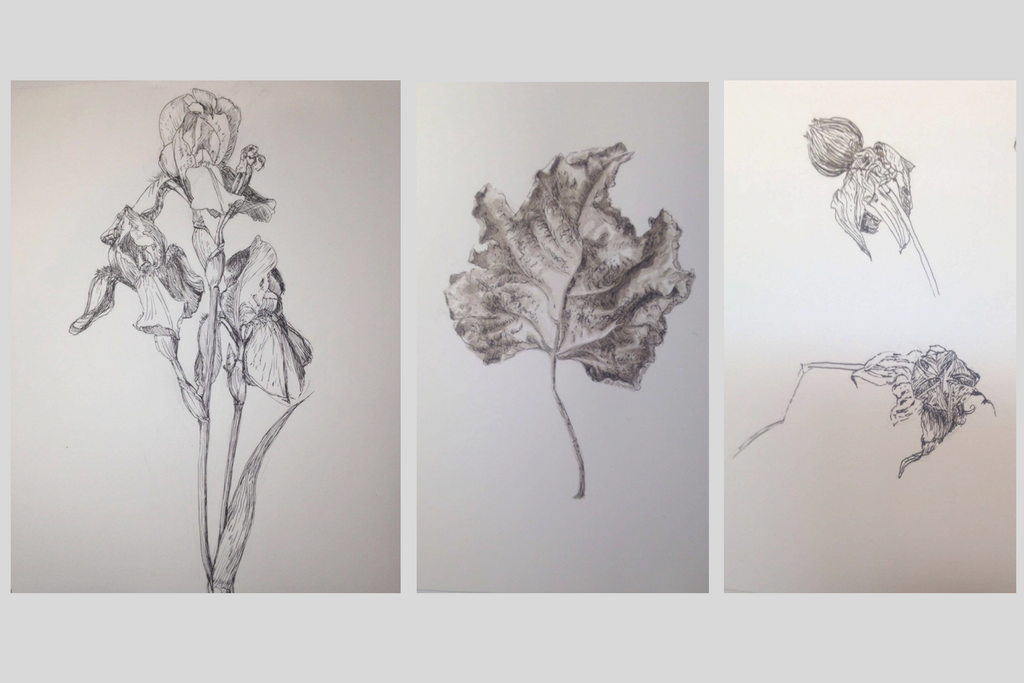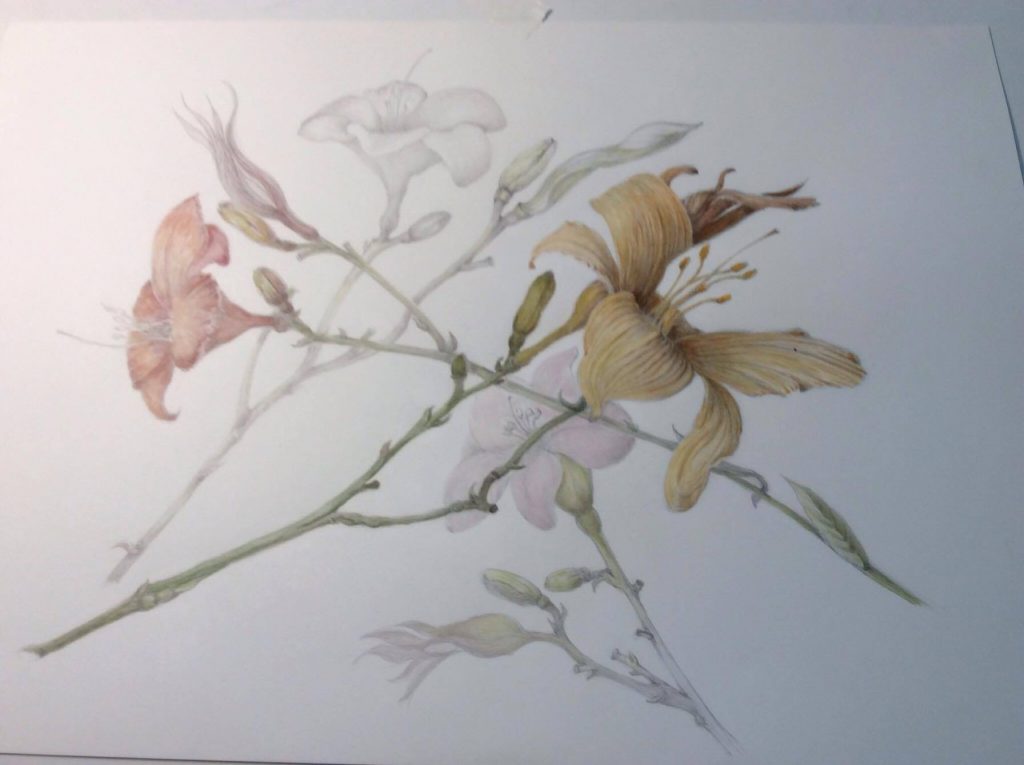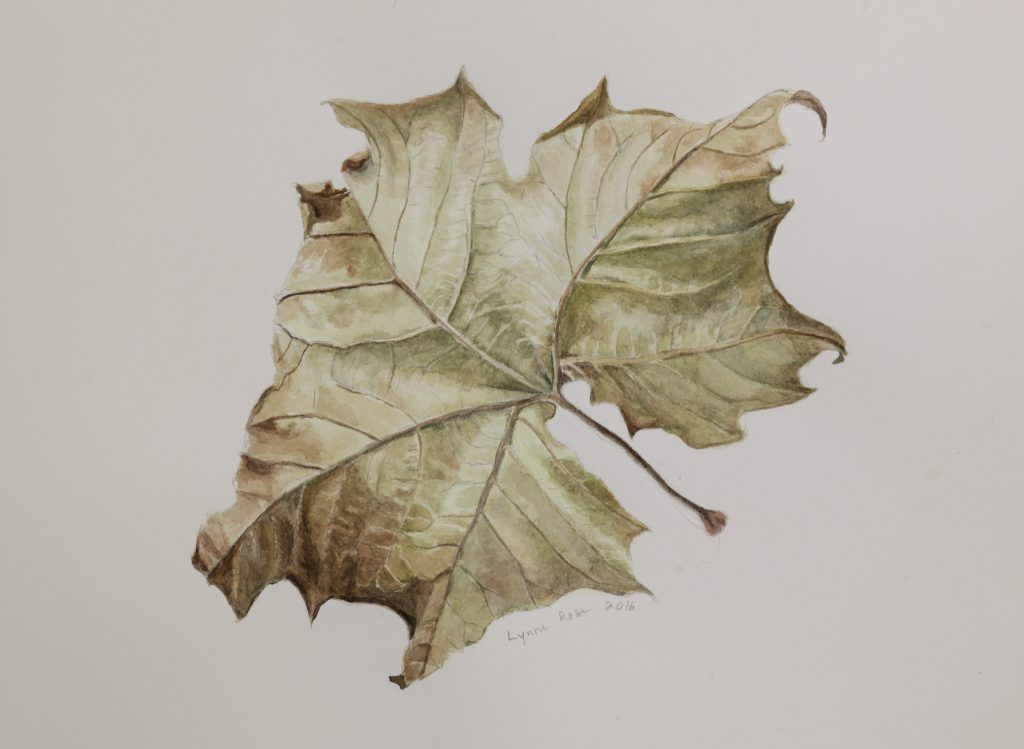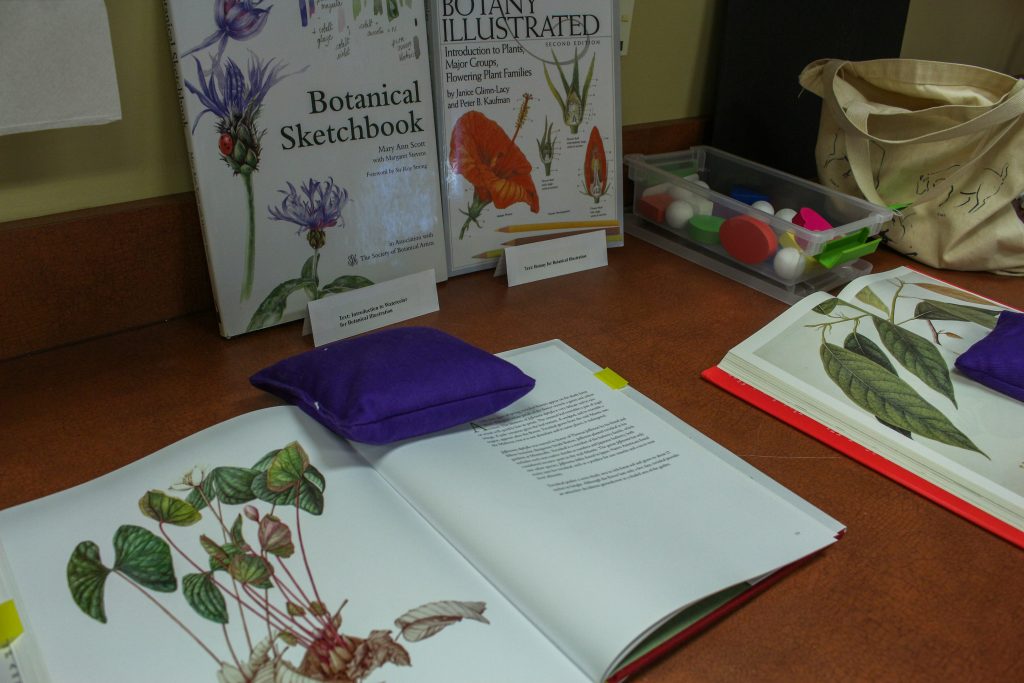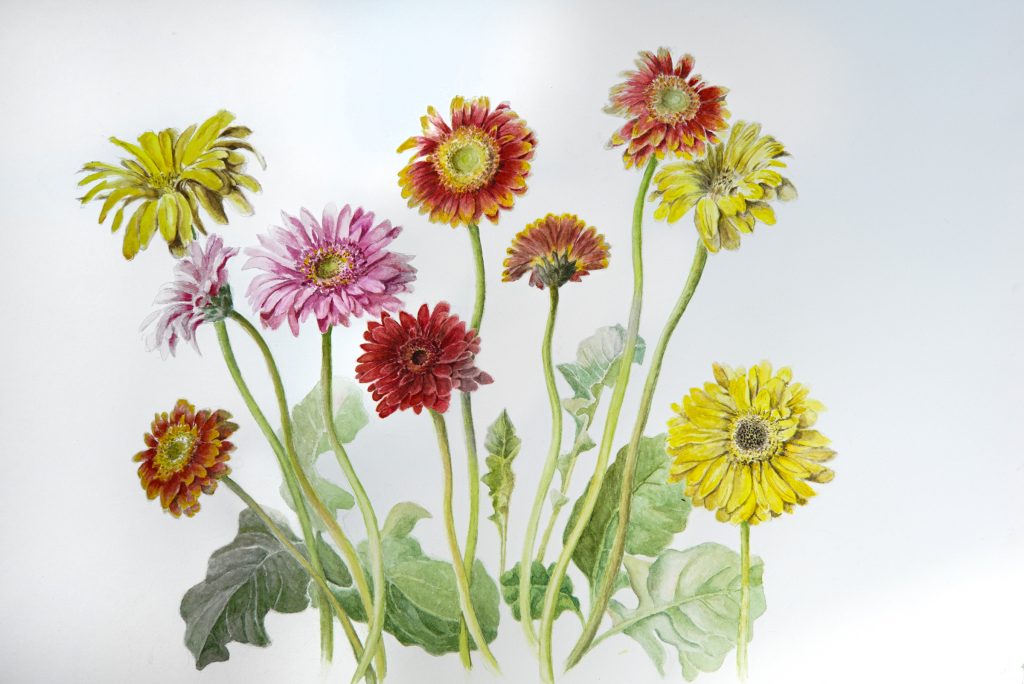Botanical Art: Drawing a Garden
Lynne Munden Frailing & Botanical Art
Grow your art as you grow your garden
Botanical art student Lynne Frailing enrolled in the Botanical Illustration Certificate program so that she could draw her own garden. Commuting from her home in Virginia Beach to take classes at Lewis Ginter Botanical Garden, Frailing, a real-estate agent by profession, is passionate about both art and flowers. During the 2016 Virginia’s Historic Garden Week in Hampton Roads, Frailing had an art show at Fort Monroe, doing a demonstration of botanical painting in watercolor. She was also featured by PlantPop, a horticultural film studio that tells stories about people and plants, in this documentary on botanical art:
Despite her busy schedule, Frailing makes time to grow her art with as much care and deliberation as she tends her garden, where she collects irises, peonies, begonias, and also many native flowers. Half-way through completing the program, Frailing is already planning for her final portfolio, consisting of five monochromatic drawings of flowers she grows herself. The drawings are in black and white, focusing on depicting the value and form of the specimens, a common practice among professional botanical illustrators. “I want to make a record of my own plants with my own drawings,” she said.
She has been drawing since she was seven years old, when her teacher taught her how to draw a tree, which opened up a whole new world of visual perception to Frailing. She draws whenever she can, creating sketches of the world viewed through her own eyes. Soon enough, drawing became second nature to her — she draws as a hobby and also as work. She and her husband are both artists, and Frailing had worked for 12 years as an art instructor at public and private schools around Norfolk before making a career switch to be a real estate agent. “It’s a part of our brain that is not accessible by language but it is great to explore our visual sense as long as we have it,” said Frailing.
Not only is Frailing a seasoned artist, she is also a Master Gardener who got her certificate five years ago from a program in Portsmouth. As someone who is deeply involved with the gardening community in Portsmouth, she had organized outings for the group to Lewis Ginter Botanical Garden before. One day in 2014, she was looking up botanical illustration programs in Virginia and it turned out that the one offered at our Garden is the closest to her home. Having always enjoyed being at the Garden in the past, Frailing quickly signed up for her first introductory class and officially enrolled in the Botanical Illustration Certificate Program. That’s when her artistic and gardening pursuits finally came together.
If you are unfamiliar with the Garden’s various programs for adult learners, you may benefit from this brief overview. While we take pride in the beautiful gardens that we nurture, we are also dedicated to the people who love and support us. We want to help people expand their knowledge and grow their expertise, because we believe that learning is a life-long pursuit. With the multitude of adult classes offered here, you can develop your flower arranging skills, explore the natural world through art, or sample the best in horticulture and landscape design.
The Botanical Illustration Certificate Program is one of many programs we offer. You can take classes in botanical illustration either as a candidate for the certificate program or simply as an interested individual. We will provide a thorough foundation in the classical approaches and disciplines of this botanical art form. Classes are taught by experienced botanical artist instructors, who are committed to their students, whether they have a background in art or not. There are different levels of classes, from introductory to advanced. As part of the class, you’ll have the opportunity to appreciate works of other accomplished botanical artists, watch instructors do demonstrations and experiment with different media — from graphite, to watercolor, to ink.
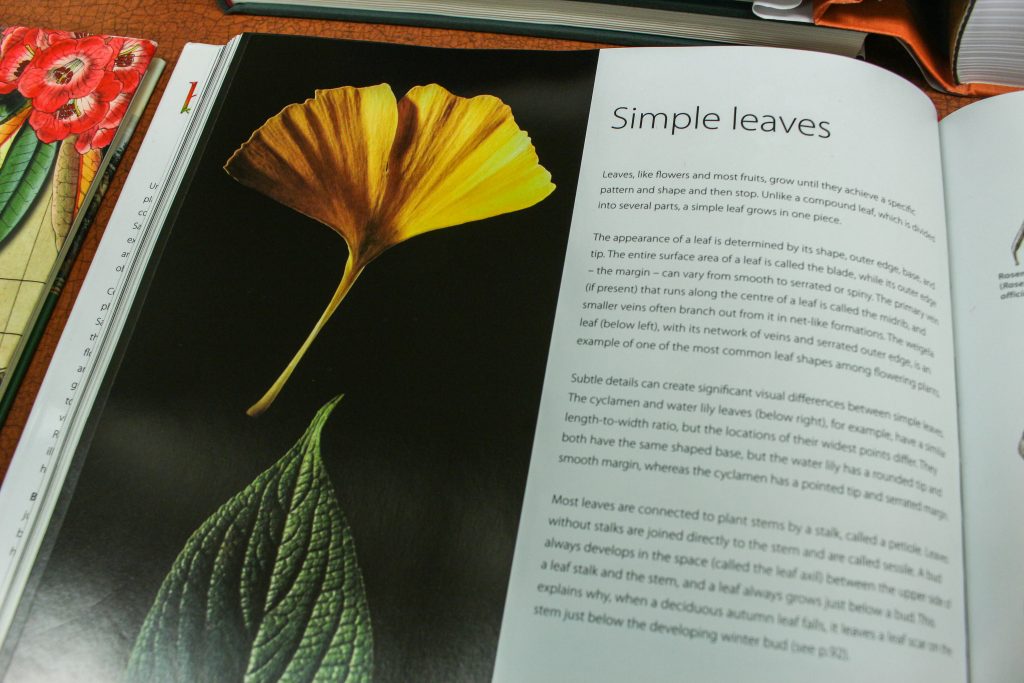
As part of the botanical illustration class, you learn to draw and paint all parts of a plant, from leaves and roots to buds and blooms. Even a simple leaf can reveal a great deal about the botanical artist.
Like plants, growing your art takes time. The Botanical Illustration Certificate program requires a minimum of 240 hours to finish, meaning that students may spend between two and three years in the program before they graduate. For Frailing, that will mean over 300 hours before she completes the program, including several hours of taking botany classes for botanical artists, attending electives of her own interest, and developing her final portfolio. That doesn’t even include the time she spends in her car commuting from Virginia Beach.
While it is true that botanical art students like Frailing spend the majority of their time working individually on studying and depicting a specimen, they also do a lot of sharing. There’s a deep shared interest in plants. They enjoy identifying the plants together and talking about what they grow in their own yards. Sometimes, they take a walk out in the Garden after class to simply admire all the beautiful blooms around them. “It’s a very good atmosphere in the class,” said Frailing.“We have lunch together. We are deeply interested in flowers and art. It was a lot of fun.”
“I would encourage people to take a class at Lewis Ginter,” said Frailing. “It’s an old art form, found all over the world. You can get a better look directly at the plant. The photograph is not going to catch the details that you put into your drawing.”
